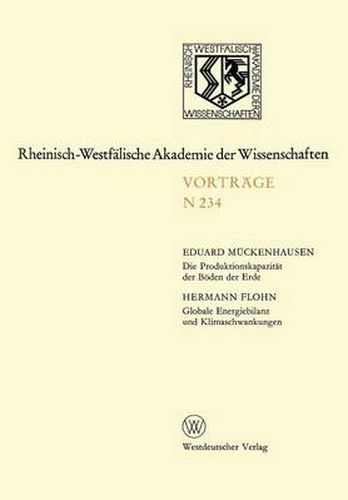Readings Newsletter
Become a Readings Member to make your shopping experience even easier.
Sign in or sign up for free!
You’re not far away from qualifying for FREE standard shipping within Australia
You’ve qualified for FREE standard shipping within Australia
The cart is loading…






This title is printed to order. This book may have been self-published. If so, we cannot guarantee the quality of the content. In the main most books will have gone through the editing process however some may not. We therefore suggest that you be aware of this before ordering this book. If in doubt check either the author or publisher’s details as we are unable to accept any returns unless they are faulty. Please contact us if you have any questions.
The existing hunger in many developing countries forces us to reflect if, and to what extent the soils of our earth are capable of producing sufficient amounts of vegetable staple food. The most important soil geographie areas of the earth are analysed with regard to their yield potential for vegetable food resources. The tundra bears scarcely any importance for the production of cultivated plants. The soils of the cool till moderately warm moist climate have mostly turned into podzols; these are rather acidic and impoverished sites with a climate relatively unfavorable for plant growth. Adjacently to the south a soil region with moderately warm, humid climate will foIlow, which is favorable for plant growth. In this region are stilliargely unutilized reserves for crop production. The soils of the mediterranean climate are very dry du ring summer time, so that only such plant species can be taken under production, which can withstand the summer drought. Here the water holding capacity of the soils as weIl as the ground water table in the valleys are playing a decisive role. The soils of the long grass prairie (Brunizems) are quite fertile and especially quaIified for corn production. The yield potential of the soils, situated in the short grass prairie is limited and curbed by the semihumid and semiarid climate respectively. In this region belong the exceptionally fertile Black Earth (Chernozem) Soils as weIl as the like- wise fertile Chestnut Soils.
$9.00 standard shipping within Australia
FREE standard shipping within Australia for orders over $100.00
Express & International shipping calculated at checkout
This title is printed to order. This book may have been self-published. If so, we cannot guarantee the quality of the content. In the main most books will have gone through the editing process however some may not. We therefore suggest that you be aware of this before ordering this book. If in doubt check either the author or publisher’s details as we are unable to accept any returns unless they are faulty. Please contact us if you have any questions.
The existing hunger in many developing countries forces us to reflect if, and to what extent the soils of our earth are capable of producing sufficient amounts of vegetable staple food. The most important soil geographie areas of the earth are analysed with regard to their yield potential for vegetable food resources. The tundra bears scarcely any importance for the production of cultivated plants. The soils of the cool till moderately warm moist climate have mostly turned into podzols; these are rather acidic and impoverished sites with a climate relatively unfavorable for plant growth. Adjacently to the south a soil region with moderately warm, humid climate will foIlow, which is favorable for plant growth. In this region are stilliargely unutilized reserves for crop production. The soils of the mediterranean climate are very dry du ring summer time, so that only such plant species can be taken under production, which can withstand the summer drought. Here the water holding capacity of the soils as weIl as the ground water table in the valleys are playing a decisive role. The soils of the long grass prairie (Brunizems) are quite fertile and especially quaIified for corn production. The yield potential of the soils, situated in the short grass prairie is limited and curbed by the semihumid and semiarid climate respectively. In this region belong the exceptionally fertile Black Earth (Chernozem) Soils as weIl as the like- wise fertile Chestnut Soils.